The Minolta X-700 was the pinnacle of Minolta's final manual-focus SLR camera series. Minolta made X-700s for 20 years starting in 1981. Minolta aimed the X-700 at the advanced amateur, giving it aperture priority and program autoexposure. The novice photographer twisted the lens until the viewfinder image was crisp and then pressed the shutter button. The X-700 took care of the rest.
A used Minolta X-700 camera reignited my passion for 35mm film photography. It's funny how certain cameras click with you, pun intended. My Pentax SP II and ES II were nostalgic buys, but using them felt more like a chore than a joy.
In the summer of 2020, I took my X-700 for a day trip with Bhavna down the shore, and I had an entirely exciting experience. The X-700 just felt right in my hands, and the shots I got were some of my favourites.
That experience sparked my curiosity to dig deeper into the world of Minolta cameras. It's incredible how the right camera can inspire and motivate you to explore your craft further. Now, I'm on a journey to learn all there is to know about Minolta's gems. Who knows what photographic adventures lie ahead?
While aperture priority shooting is my default for any camera, I was concerned that there would be action shots where exposure priority would be needed. Did Minolta have an exposure-priority 35mm film camera that was as fun to use as the X-700? My search discovered that Minolta had created a professional-quality modern multimode Minolta "X series" SLRs mostly made of metal- the XD-5, XDs, XD-7 and XD-11.
Minolta had some interesting naming conventions for its products, making a point to have distinct names in the Japanese, European and US markets for almost everything. The XD-7 is the European and Japanese market version of the XD-11: same camera, different badge. The XD-11 was sold in silver and black models. I found many silver-bodied XD-11s for sale online, but I prefer the black body. The black model was more expensive, and consequently, fewer were sold. Thus, the black XD-11 body is much more costly and desirable in today's used market. After several weeks of searching eBay, Etsy, KEH and anywhere else that sold film cameras, I found an XD-11 body on Facebook Marketplace. After a quick negotiation on price and an agreement that I would pay shipping instead of collecting in person, my "new-to-me" camera arrived from Pennsylvania.
The X series uses Minolta MD and MC mount lenses. Unlike MC lenses, MD lenses have an extra coupling arm for use with multimode metering. The older MC (Meter Coupled) lenses can be used on "X series" cameras but not in the exposure-priority mode.
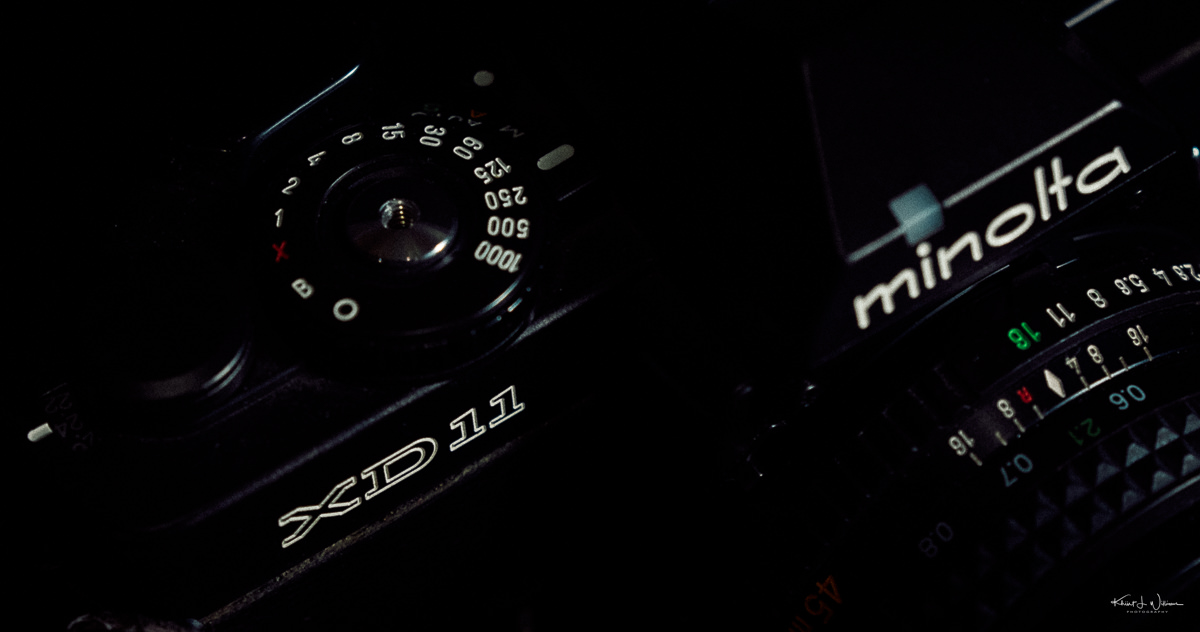
My XD-11 camera was sold as "body-only", but this was not a problem since I already had a standard MD Rokkor-X 50mm f/1.7 and a JC Penny 80-200 Zoom that came with the Minolta X-700. The MD Rokkor-X 50mm f/1.7 is a superlens, but I prefer a field of view closer to that of the human eye for general use. A few months later, I purchased an MD Rokkor-X 45mm f/2 lens, a versatile manual focus lens often hailed for its solid performance and compact design. Its 45mm focal length falls within the "normal" range, making it great for everyday photography. This became my primary lens for the XD-11.
Released in 1977, the XD11 was the world's first camera with aperture priority, shutter priority, and a fully metered manual mode.
Minolta developed the XD-11 in conjunction with Leitz, with some websites claiming that the body was the basis for the Leica R4 and, later, as the chassis for the Leica R5, R6 and R7. Leica introduced a more advanced metering system into the body (including spot metering). Still, most other camera features are evident in both bodies.
Inside the film bay, the take-up spool and rewind crank are about as vanilla as possible. Pull up on the crank when loading film, and the door opens. The take-up spool grabs the film leader with authority and pulls it around and into place without hinting at a missed load. Unlike the X-700, the XD-11 has a film load indicator, a minor but delightful feature in a few other era cameras.
The XD-11's fresnel, micro prism spot viewfinder screen is about efficiency. Metered manual mode conveniently displays your chosen aperture and shutter speed, so you don't have to look away. This keeps you immersed in the shot, helping you maintain your creative flow and ensuring accurate settings simultaneously.
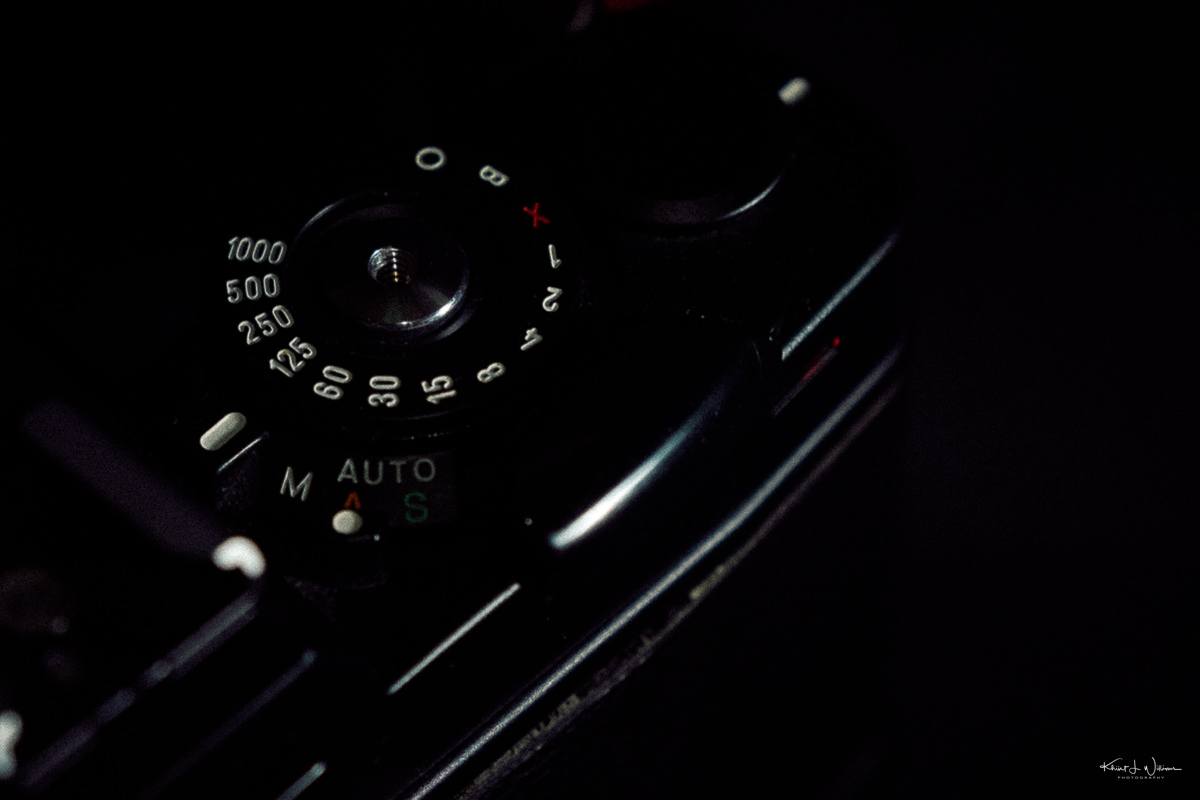
The XD-11 camera features a Silicon photocell TTL centre weighted meter, which uses silicon photocells to measure light for exposure accurately. This metering system prioritises the central part of the frame when calculating exposure, striking a balance between accuracy and simplicity. This technology made the XD-11 a reliable choice for photographers.
The ASA range of the XD-11 camera typically spans from ASA 25 to ASA 1600. Remember that these are traditional film sensitivity settings, as digital cameras nowadays use ISO to indicate sensitivity. While I have exposed a 35mm roll of RPX 25, I'm not fond of grain, so I will likely never expose 35mm film at ASA higher than 400.
The Minolta XD-11 uses two 1.5v silver button (S76/SR44) batteries. It can be used without batteries but will lose automatic exposure and light meter functions. You'd need to set exposure manually using your knowledge or an external light meter. If you're comfortable with manual settings, it's feasible; otherwise, having fresh batteries would maintain the camera's automatic features.
The Depth of Field (DoF) preview button on the XD-11 camera lets you check how much of your scene will be in focus at the selected aperture. It's a helpful feature for adjusting focus and composition before capturing the shot.
The "safe-load" indicator on the XD-11 is a valuable feature that helps users load film accurately, minimising the risk of misalignment or incomplete loading. It provides a visual confirmation that the film is securely in place, assuring the overall reliability of the camera during the film-loading process.
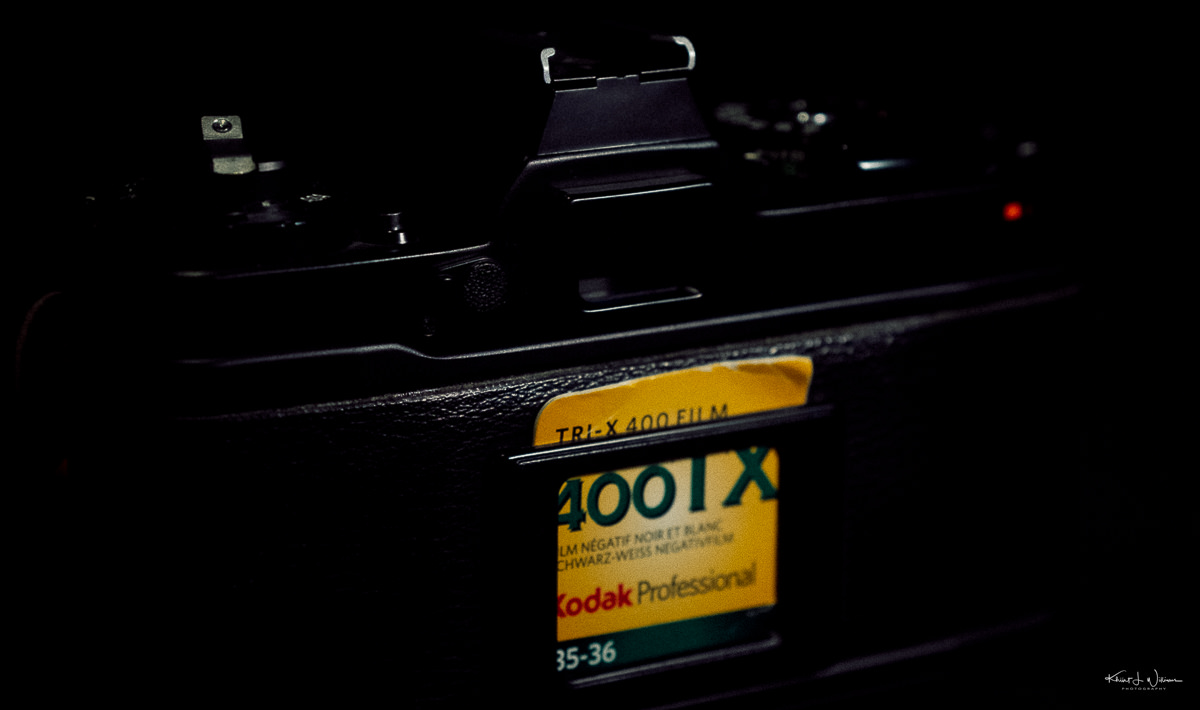
The Self-timer on the XD-11 offers a delay option for hassle-free self-portraits or group shots. It's a handy feature that lets you compose your shot before the shutter clicks.
Shutter priority mode on the XD-11 lets you choose the desired shutter speed while the camera handles the aperture. It's handy for controlling motion in your shots, whether freezing action with a high speed or adding motion blur with a low one. It strikes a nice balance between manual control and convenience.
The XD-11 camera has a Seiko electronically controlled metal focal plane shutter with step-less speeds from 1/1000 to 1 second in automatic and stepped speeds, including "B" in metered manual mode. Flash sync operates at 1/100s with the "X" shutter dial setting. The XD-11 offers full mechanical operation at settings "O" (1/100 sec) and "B." In shutter priority mode, it provides electronic automatic aperture control and a final check metering system. This ensures exposure accuracy by stopping the lens down for assessment, a feature shared with the Minolta X-700. The XD-11 combines electronic innovation with mechanical reliability for precise photographic outcomes.
The Minolta XD-11 offers an exposure compensation range of around ±2 EV in 1⁄3 EV steps. This allows you to adjust brightness by up to two stops in either direction for creative control in your film photography.
The Minolta XD-11 weighs about 620 grams (1.37 pounds) and measures around 142mm (5.6 inches) in width, 92mm (3.6 inches) in height and 48mm (1.9 inches) in depth. Minolta balanced a solid build and manageable weight for that era.
I've had experience with 35mm film SLRs, so using the XD-11 was old hat. However, I took the time to review the manual to ensure I was using it correctly. Unless mentioned otherwise, all the photos were taken using the aperture-priority mode.
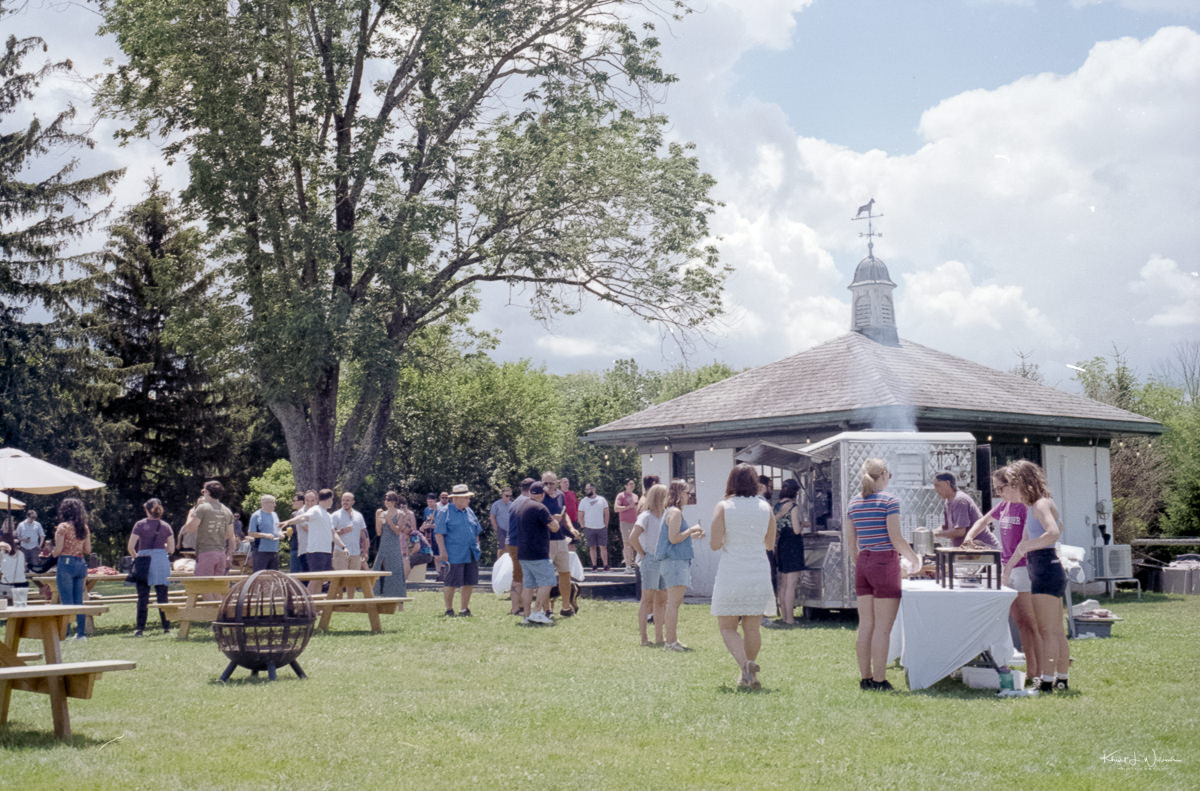
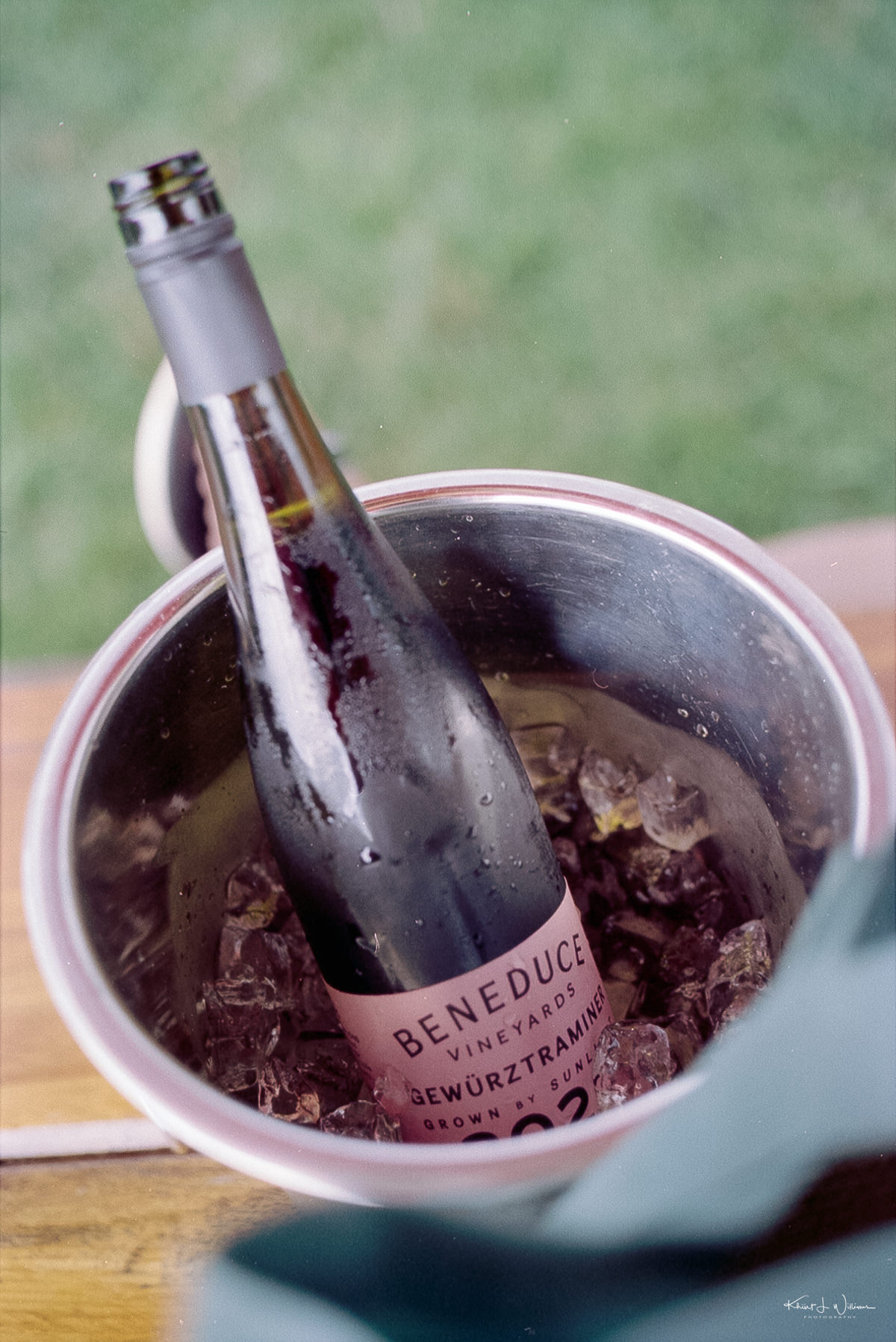


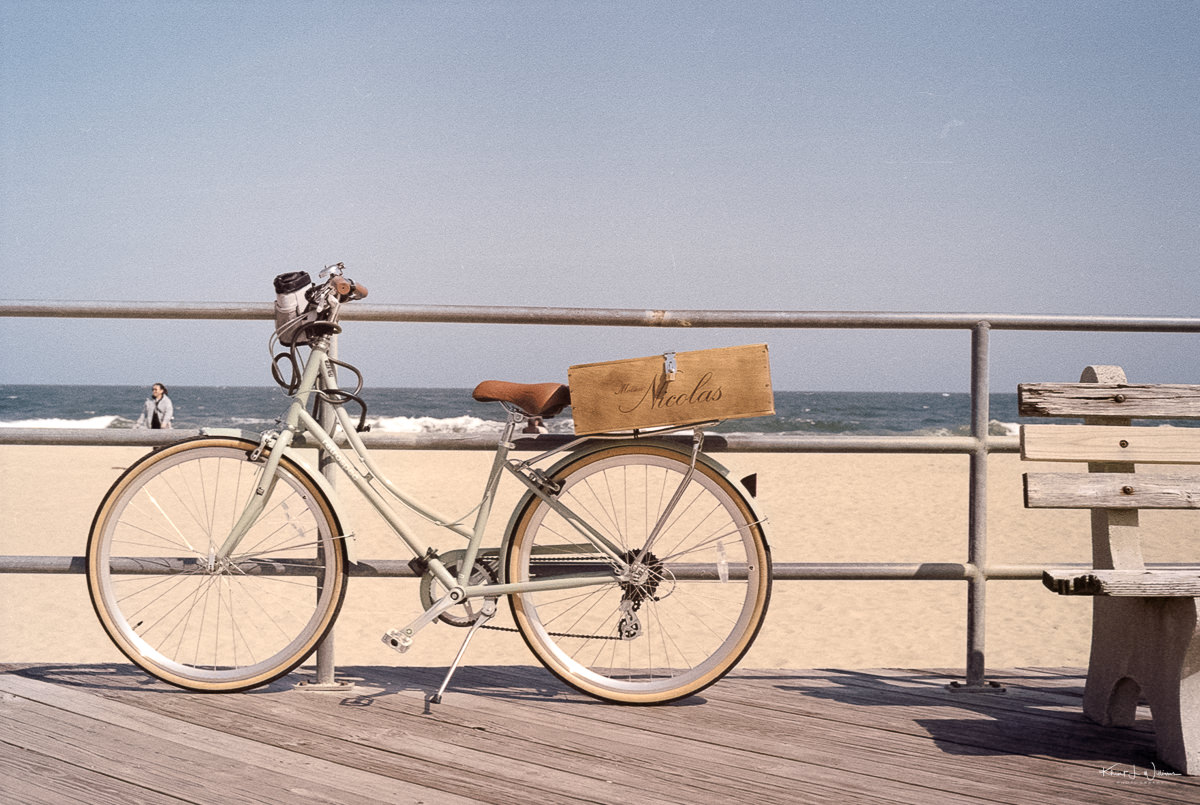
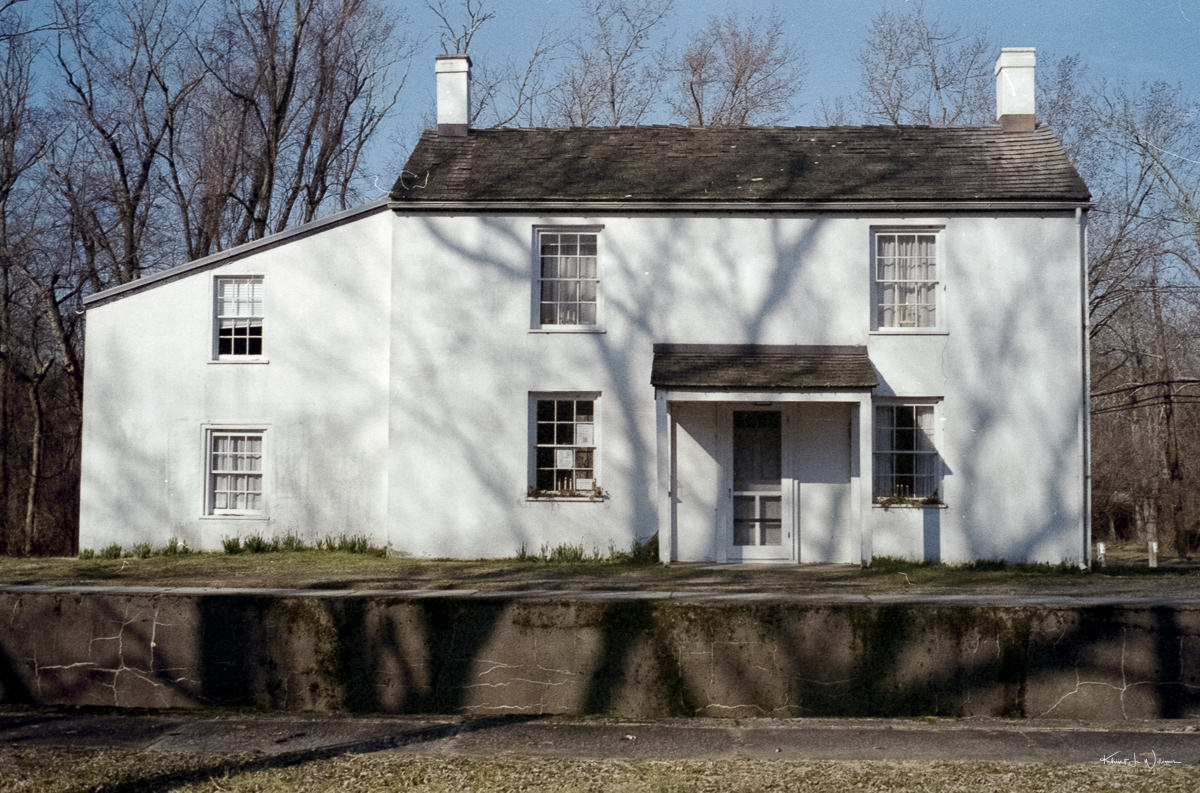
If you like Minolta SLRs, you might also enjoy my reviews of the XD-11, the X-700, and the XG-1. Or check out all of my camera reviews here.
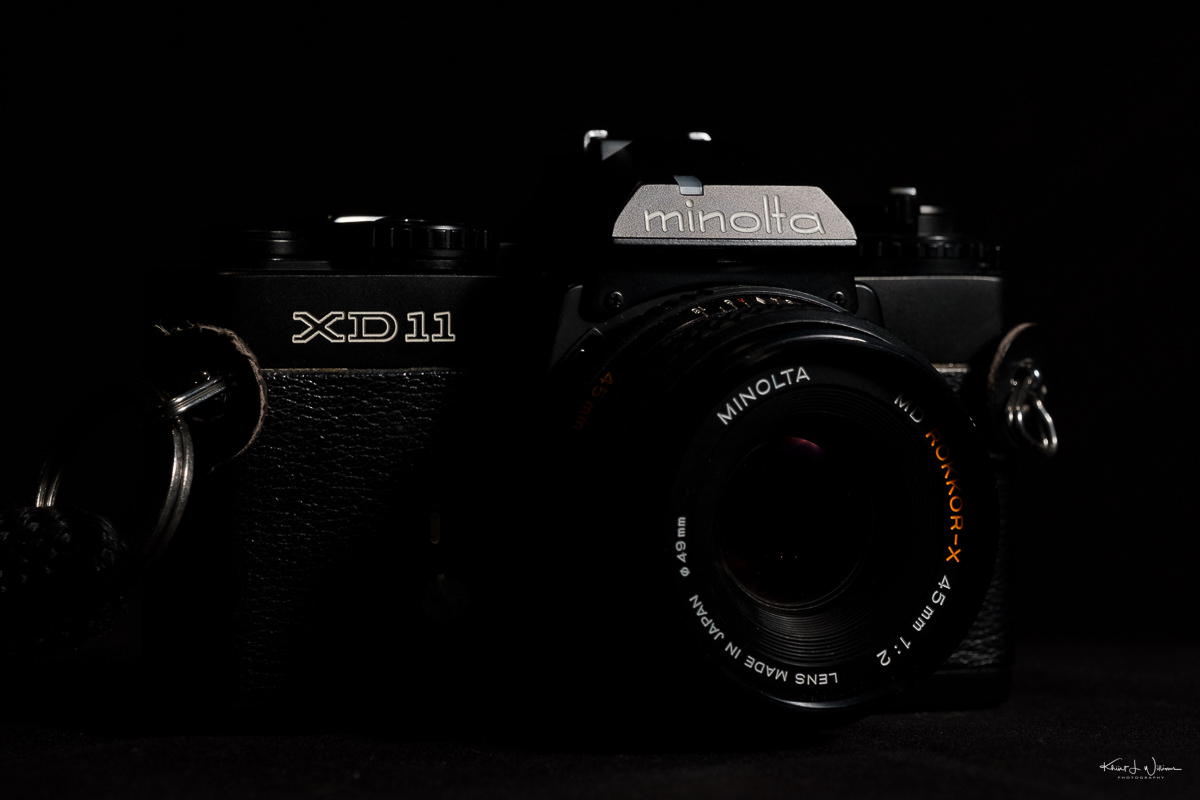

One thought on “Experience Report: Minolta XD-11”